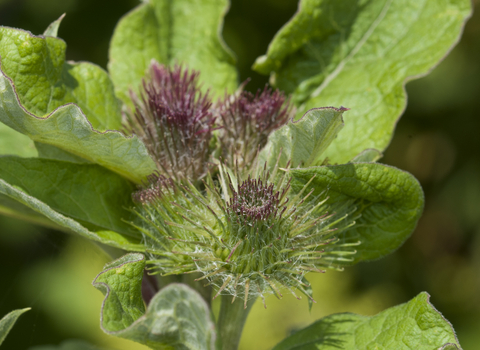
Greater burdock ©John Bridges
Greater burdock
Greater burdock is familiar to us as the sticky plant that children delight in, frequently throwing the burs at each other. It actually uses these hooked seed heads to help disperse its seeds.

Greater burdock ©John Bridges